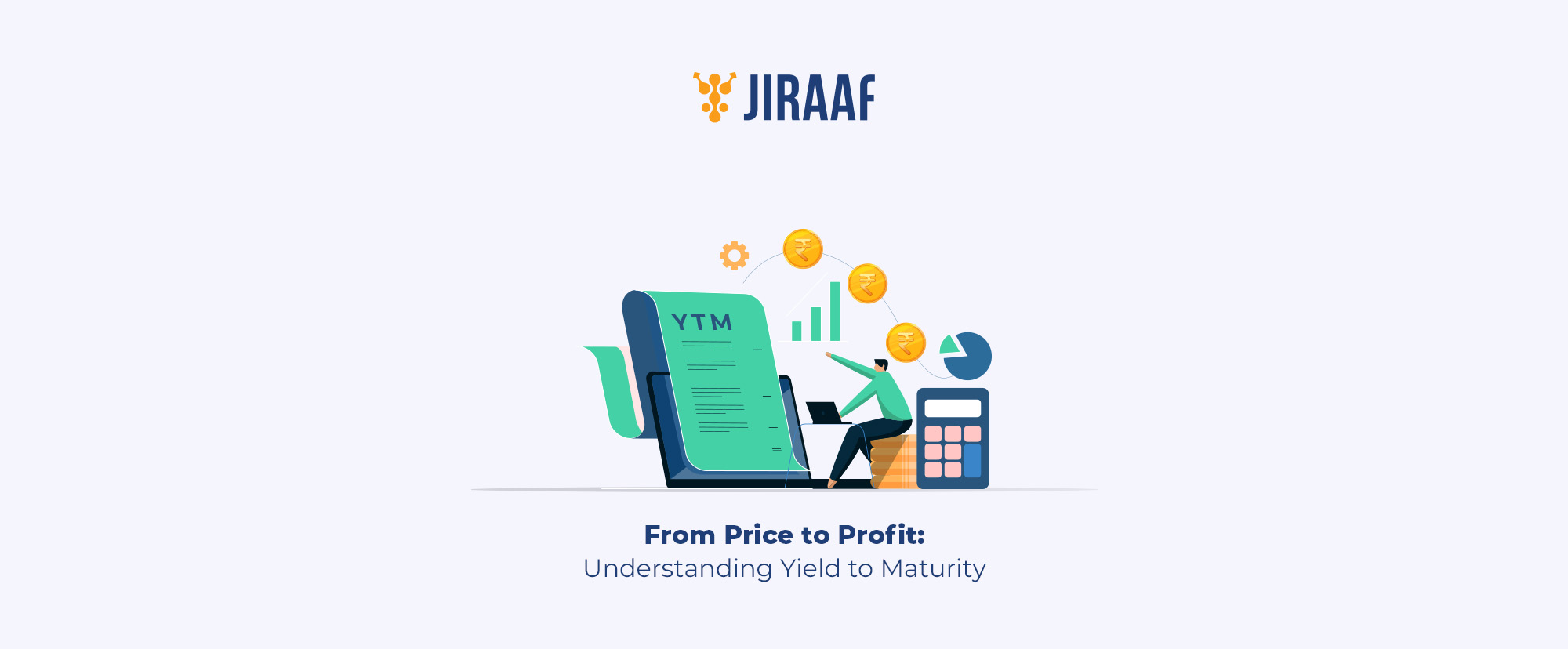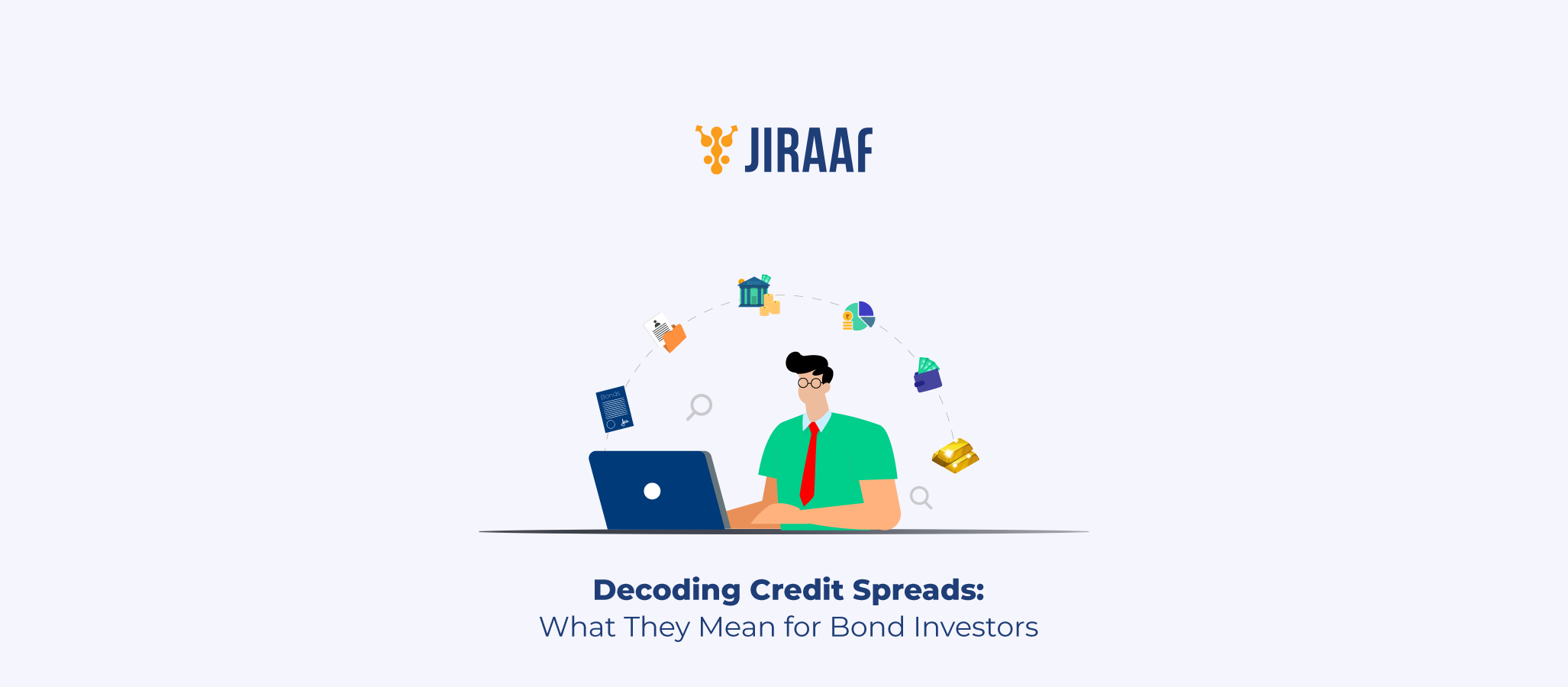Picture this: you have decided to diversify your portfolio with bonds and are now comparing options with different prices, coupon rates, and maturity dates. How do you determine which offers the best returns over time? That’s where Yield to Maturity (YTM) comes in—a key metric that simplifies bond comparisons and helps you optimize your returns.
By understanding YTM and how it stacks up against other measures like current yield and coupon rate, you can unlock a bond’s full potential. This guide unpacks YTM, explains how to calculate it, and highlights its practical uses to help you make informed investment decisions.
What is Yield to Maturity (YTM)?
Often referred to as the “promised yield” or “bond equivalent yield”, YTM represents the total return you can expect if you hold a bond until maturity, assuming all interest payments are reinvested at the same rate.
It incorporates both the bond’s coupon payments and any capital gain or loss from buying at a discount or premium. YTM also branches into specific variations like:
Yield to Call (YTC): Relevant for callable bonds, YTC measures the yield if the bond is redeemed early by the issuer
Yield to Worst (YTW): The lowest possible yield, assuming the issuer exercises the earliest call option
These measures help investors accurately assess potential returns, particularly for callable bonds with unique features.
What Determines a Good YTM Rate?
A “good” YTM rate is subjective and largely dependent on market conditions and your personal investment goals. Generally, a desirable YTM should ideally outpace inflation and offer a premium over safer, low-risk assets like Treasury bonds. However, higher YTMs often signal higher risk, requiring a careful evaluation of bond quality, credit rating, and maturity to align with your risk tolerance and return expectations.
In addition, the relationship between YTM and interest rate sensitivity is noteworthy: the higher the YTM, the less sensitive the bond is to changes in interest rates. This can be particularly relevant for long-term investors aiming for stable returns in fluctuating markets.
By understanding YTM, alongside its variations and what makes a rate “good,” you gain a robust toolset for evaluating bonds—whether you’re comparing options based on their maturity lengths, interest rate environments, or unique callable features.
Importance of YTM in Bond Investments
Yield to maturity is crucial in evaluating a bond’s earning potential. Unlike the coupon rate, which reflects the fixed interest based on the bond’s face value, or the current yield, which measures income generated at the bond’s current price, YTM offers a complete picture of potential returns. Here’s how it helps:
- Evaluating Bond Value: YTM combines cash flows, including interest payments and adjustments for buying at a premium or discount, providing a single rate to compare various bonds
- Assessing Market Value: Since YTM considers price fluctuations, it can guide you in choosing bonds with favorable interest rates, helping you determine if a bond is undervalued or overpriced
- Setting Realistic Returns: Knowing a bond’s YTM can help you project your earnings more accurately, aligning your investment strategy with your expected returns
Yield to Maturity Vs. Other Yield Measures
Understanding the distinction between YTM, the coupon rate, and the current yield can add depth to your bond assessment.
| Coupon Rate | Current Yield | Yield to Maturity |
| – It is the fixed annual interest payment – Based on bond’s face value – Doesn’t change with market fluctuations | – It measures income at the bond’s current price – Offers a snapshot of yield based on current market conditions Lacks the comprehensive scope of YTM | – It is a comprehensive yield measure – It encapsulates all income from a bond, including interest payments and price changes |
How to Calculate YTM with Formula
Calculating YTM involves an approximation formula that requires knowledge of the bond’s coupon payment, current price, face value, and years to maturity. Here’s the yield-to-maturity formula:
YTM ≈ (C + (F−P)÷n) / (F+P) ÷ 2
Where,
𝐶 = Annual coupon payment
𝐹 = Face value of the bond
𝑃 = Current bond price
𝑛 = Years to maturity
Calculating the exact yield to maturity requires a financial calculator or software due to its iterative nature, but this formula provides a close approximation.
Example with calculation:
You buy a 10-year bond with a face value of ₹1,000 and a 5% annual coupon rate, but you pay only ₹950 for it. In this case:
C = ₹50 (5% of ₹1,000)
F = ₹1,000
P = ₹950
n = 10
Using the formula, we find an approximate YTM of about 5.57%. This rate reflects your expected return over the bond’s lifetime if you hold it to maturity, taking into account the annual interest income and the gain from buying the bond at a discount.
Calculating YTM precisely often requires a financial calculator or software, as the actual YTM is obtained through an iterative process. However, this formula gives a close estimate, providing an essential comparison point.
Assumptions in YTM Calculation
To get the most accurate YTM calculation, this formula relies on three core assumptions:
- Holding the Bond Until Maturity: YTM assumes you’ll keep the bond until it matures, allowing you to benefit from all expected cash flows
- On-Schedule Payments: It presumes that all coupon and principal payments will be made on schedule
- Reinvestment at YTM Rate: All coupon payments are assumed to be reinvested at the same yield to maturity, which may not hold in fluctuating rate environments
These assumptions make YTM a valuable but approximate measure. Understanding them ensures you know what YTM does—and doesn’t—predict about your bond returns.
Factors Affecting Yield to Maturity (YTM)
Several factors impact YTM, affecting the return you ultimately receive. Among them are:
- Interest Rates: Bond prices and interest rates have an inverse relationship. When rates rise, bond prices fall, increasing YTM, and vice versa
- Price Movements: Bonds bought at a discount (below face value) generally have a higher YTM, compensating for the difference between the purchase price and face value
- Maturity Length: Longer maturities are more sensitive to rate changes, affecting the yield to maturity
Considering these factors gives you an edge in anticipating changes in YTM and aligning your investment strategy with the current market.
YTM in Bonds: Practical Applications and Limitations
Yield to maturity is valuable for guiding investment choices, but it has its limitations. Let’s have a look at both:
Applications:
- Comparative Analysis: YTM allows you to compare bonds with different maturities, face values, and coupon rates on an equal basis, helping you find bonds with optimal returns
- Return Planning: With YTM, you can project the bond’s annualized return, informing realistic income goals for your portfolio
- Interest Rate Sensitivity: Since YTM reflects a bond’s sensitivity to interest rate changes, it helps you navigate rate fluctuations
Limitations:
- Reinvestment Assumption: Yield-to-Maturity assumes coupon reinvestment at the YTM rate, which may be inaccurate if rates change
- No Account for Taxes: YTM calculations don’t consider taxes, which could reduce net returns
Common Misconceptions About YTM
Some common misconceptions can lead investors to overestimate YTM’s accuracy or relevance:
| MYTH | FACT |
| YTM equals actual return | YTM is not the actual return but an estimate based on assumptions that the bond is held to maturity, payments are on time, and reinvestments match the YTM rate |
| Higher YTM always means a better investment | A higher YTM can indicate higher risk, especially with lower credit quality bonds, overlooking risks like credit quality, callable features, and bond maturity |
| YTM accounts for all costs and taxes | YTM does not account for transaction costs, taxes, and inflation, which can lower net returns, making actual take-home yield less than the stated YTM |
| YTM is fixed | YTM changes with market conditions like interest rate changes, which directly impact bond prices |
| YTM alone determines a bond’s value | Factors like bond liquidity, issuer rating, and economic factors also influence bond value with YTM |
| YTM is the same as the total return | Total return includes all cash flows, gains/losses, and reinvested income. YTM gives an annualized yield but doesn’t account for capital gains or reinvestments like total return |
| YTM works for all bond types | Some bonds like callable or zero-coupon bonds may require specific yield measures like YTC or YTW for a realistic view |
Clearing up these misconceptions helps investors gain a more accurate and comprehensive understanding of YTM, enabling better-informed investment decisions.
Concluding Thoughts on YTM in Bonds
For active bond investors, yield to maturity is an indispensable tool for making informed decisions. As a single rate that encapsulates a bond’s earning potential, YTM empowers you to set realistic expectations and optimize bond selection, making it an essential part of any fixed-income strategy.
Remember that YTM is best used alongside other metrics such as the bond’s credit quality and its coupon rate to shape a diversified, resilient portfolio. By incorporating YTM and its variations into your broader strategy, you’re not only preparing for current returns but also building a foundation for sustained income over the long term.
FAQs About Yield to Maturity
How Does YTM Affect Bond Prices?
Yield to maturity (YTM) and bond prices move inversely: when bond prices rise, YTM decreases, and when bond prices fall, YTM increases. YTM calculates your potential return based on both the bond’s price and its fixed interest payments. So, if you’re buying a bond at a discount, the YTM will be higher, as it factors in the profit, you’ll gain by holding it until maturity.
Is a Higher YTM Always Better for Investors?
Not necessarily. While a higher YTM can indicate greater returns, it may also signal higher risk, especially in bonds with lower credit ratings or uncertain economic conditions. Consider your investment goals and risk tolerance: a high YTM might suit aggressive investors, but conservative ones might prefer stable, lower-YTM bonds from reputable issuers. Look at the bond’s credit quality, interest rate environment, and your portfolio’s needs before deciding.
What Is the Difference between YTM and Total Return?
Yield to maturity (YTM) estimates your annualized return if you hold a bond until maturity, assuming all payments are made on time and reinvested at the same rate. Total return, however, accounts for the actual returns, including bond price changes if you sell early, reinvestment variations, and any interim gains. Essentially, YTM is a predictive tool, while total return reflects real outcomes based on market conditions and your actions.
Discover fixed income investments with Jiraaf, a SEBI registered online bonds platform that educates and brings access to a wide array of bonds. Sign up today to explore diversified fixed income investment opportunities to support your goal-based wealth creation journey. Start investing!




